Breaststroke swimming is one of the most popular and accessible swimming styles, known for its smooth, rhythmic motion and beginner-friendly technique. Unlike faster strokes such as freestyle or butterfly, breaststroke allows swimmers to keep their head above water for much of the cycle, making it ideal for those learning to swim or building endurance. This stroke combines a glide, pull, kick, and recovery into a coordinated sequence that emphasizes timing and balance. Because of its low-impact nature, breaststroke swimming is often recommended for people with joint concerns, older adults, and individuals recovering from injury.
At the same time, competitive swimmers use advanced techniques to make this stroke fast and efficient in races. Whether you’re training for fitness, rehabilitation, or competition, mastering breaststroke swimming offers both physical and mental benefits. It strengthens major muscle groups, improves lung capacity, and promotes body awareness in the water. As we explore its mechanics, common mistakes, training drills, and health advantages, you’ll gain a deeper understanding of how to perform this stroke correctly and enjoyably.
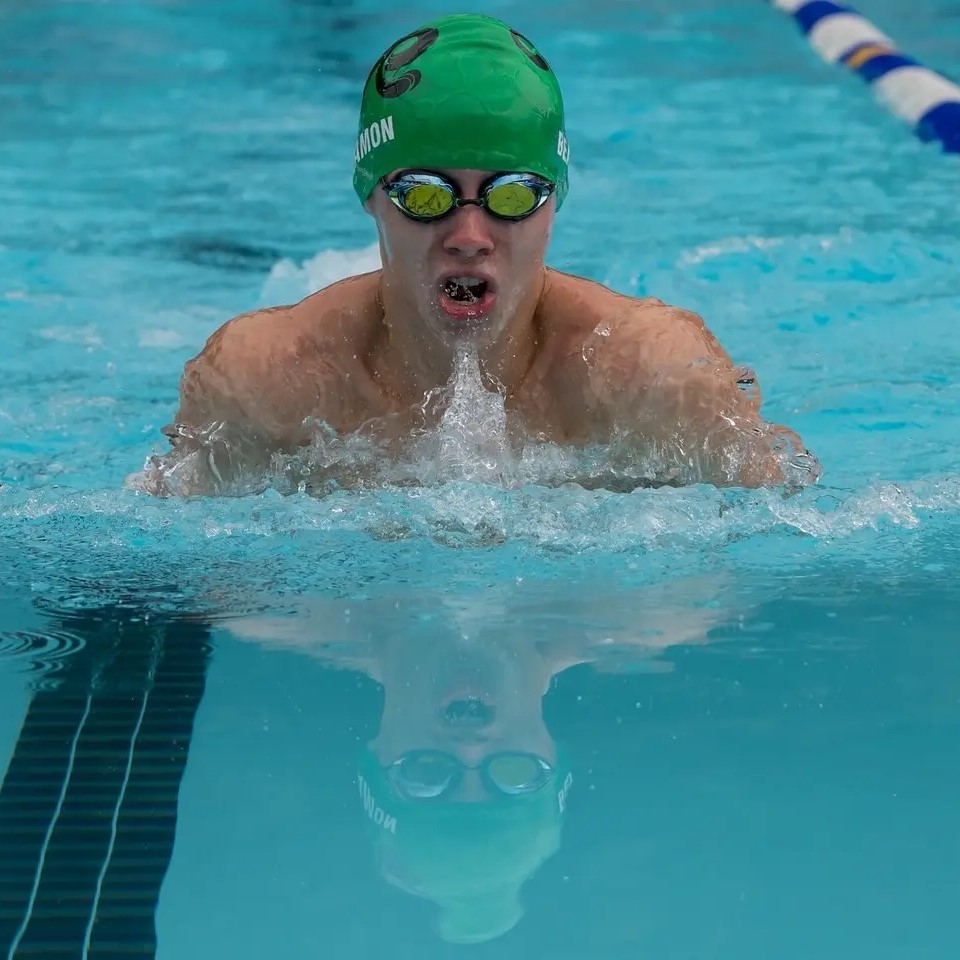 Why Breaststroke Swimming Is Ideal for Beginners and Long-Distance Swimmers
Why Breaststroke Swimming Is Ideal for Beginners and Long-Distance Swimmers
Breaststroke swimming stands out because it suits a wide range of skill levels and goals.
First, beginners find it easier to learn. The head stays above water during most of the stroke. This reduces anxiety and allows steady breathing. Swimmers can focus on coordination without struggling for air.
Second, it builds confidence. New swimmers often feel overwhelmed by fast-paced strokes. Breaststroke’s slower rhythm gives them time to adjust and improve.
Third, it supports long-distance efforts. Many open-water swimmers use modified breaststroke for stamina. Its energy-efficient pattern conserves strength over extended periods.
Also, it enhances body awareness. Each phase—pull, breathe, kick, glide—requires precise timing. This helps swimmers develop better control and feel for the water.
Moreover, it works well for older adults. Joint stress is minimal compared to other strokes. The movement flows smoothly without sudden jerks or strain.
In addition, it aids in rehabilitation. Physical therapists often recommend breaststroke swimming to patients with back or shoulder issues. The controlled motion supports gentle healing.
Furthermore, it improves posture. The horizontal position stretches the spine. Core engagement keeps the body aligned throughout the stroke.
Many swimmers also appreciate its visibility. Since the face leaves the water regularly, they can see ahead. This is helpful in open water or crowded pools.
Finally, it teaches breath control. Breathing happens at the peak of the lift. This natural pause encourages deep, relaxed inhales.
Because of these advantages, breaststroke swimming remains a top choice for those starting out or aiming for sustainable, long-term aquatic exercise.
The Four Phases of Proper Breaststroke Technique
Mastering breaststroke swimming means understanding its four distinct phases: the glide, the pull, the breathe, and the kick.
The glide starts the cycle. After each stroke, the body extends fully. Arms stretch forward. Legs stay together and straight. This streamlined position reduces drag and saves energy.
Next comes the pull. Hands move outward and downward in a circular motion. Elbows stay high. The palms turn outward to catch water. This action pulls the body forward.
Then, the breathe phase begins. As the hands pull under the chin, the head lifts naturally. Swimmers take a quick breath through the mouth. The neck stays relaxed. Eyes look slightly forward.
After breathing, the kick follows. The legs bend at the knees and draw toward the hips. Feet turn outward in preparation. Then, a whip-like motion pushes water backward. This propels the body forward.
Finally, the recovery brings the legs back to the starting position. Knees come together. Feet point behind. The body returns to the glide, completing the cycle.
Timing is crucial. A common mistake is rushing the kick before finishing the pull. This breaks momentum. Instead, maintain a smooth transition between each phase.
Hand positioning matters too. Fingers should stay close. Spread fingers reduce power. Palms must face outward during the scoop.
Leg alignment affects efficiency. Knees should not rise too high. This creates drag. Keep them below the surface.
Practice each phase slowly. Use drills to isolate movements. Build muscle memory before increasing speed.
With consistent focus, breaststroke swimming becomes fluid, powerful, and enjoyable.
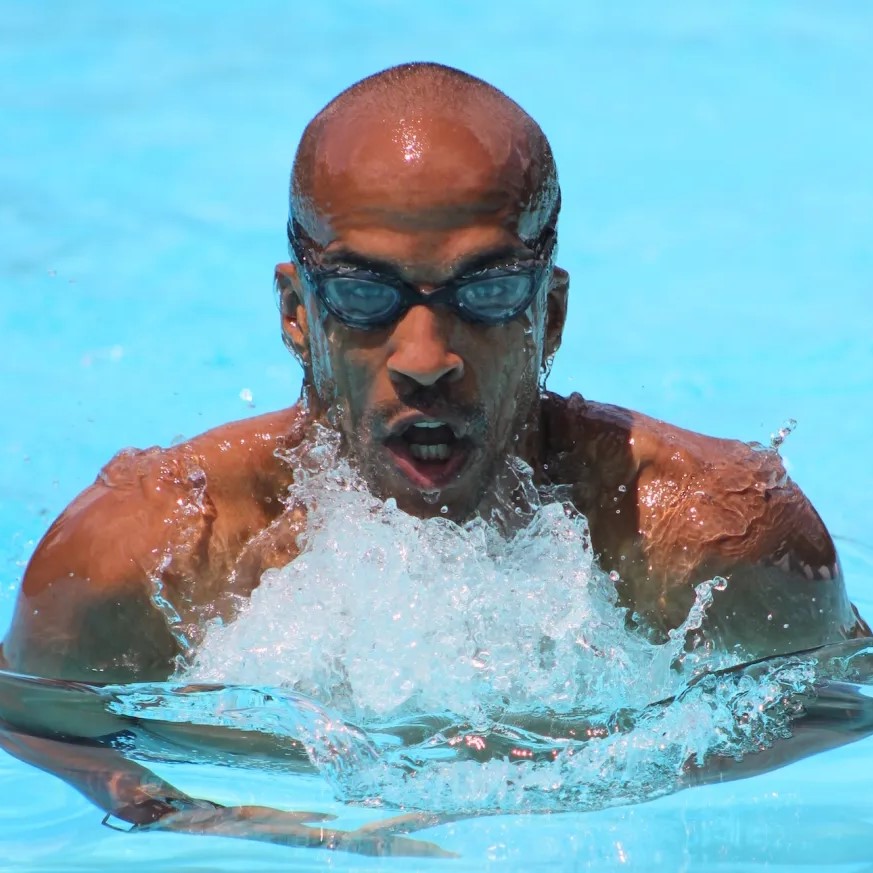 Common Mistakes in Breaststroke and How to Fix Them
Common Mistakes in Breaststroke and How to Fix Them
Even experienced swimmers make errors in breaststroke swimming. Recognizing and correcting them improves performance.
One frequent issue is lifting the head too high. Swimmers often crane their necks upward. This drops the hips and increases resistance. Instead, lift only the chin. Keep the neck in line with the spine.
Another mistake is using a frog kick incorrectly. Some bring knees too far forward. This slows progress. The correct motion is compact. Feet should swing wide then snap inward.
Over-gliding is also common. Holding the extension too long kills rhythm. Limit the glide to one second. Move into the next pull promptly.
Pulling too wide is another flaw. Hands that go past shoulder width lose power. Keep the pull within the shoulder line. Focus on pushing water backward.
Breathing at the wrong time disrupts flow. Some inhale too early or late. Sync the breath with the peak of the arm pull. This ensures smooth timing.
Kicking with straight legs reduces thrust. The kick needs bent knees and outward foot rotation. Practice dryland exercises to build muscle memory.
Some swimmers forget to streamline. After the kick, arms and legs must extend fully. Any bend creates drag. Hold the glide tight and sharp.
Using hands like paddles instead of scoops weakens propulsion. Rotate palms outward during the pull. Cup the water for maximum force.
Misaligned hips affect balance. Hips should stay level with the shoulders. Avoid bobbing up and down. Maintain a horizontal plane.
Finally, rushing the stroke leads to poor form. Slow down. Focus on precision. Speed will come with practice.
By addressing these issues, swimmers enhance efficiency and reduce fatigue.
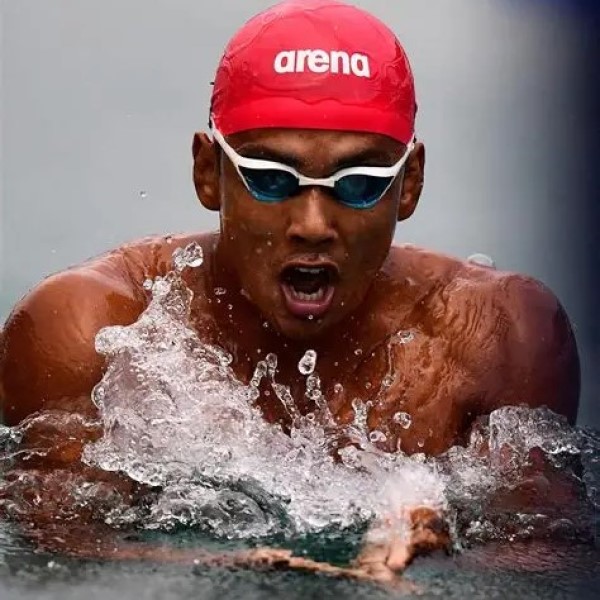 Drills to Improve Your Breaststroke Efficiency
Drills to Improve Your Breaststroke Efficiency
Drills help swimmers refine technique and build strength in breaststroke swimming.
First, try the glide drill. Push off the wall and hold the streamline position. Count how many seconds you glide. Aim for longer distances with less effort.
Next, use the sculling drill. Move hands in small figure-eights near the surface. This improves feel for the water. It also strengthens the pull phase.
The two-kick, one-stroke drill builds rhythm. Perform two full kicks for every single arm pull. This emphasizes leg power and timing.
Isolate the kick with the vertical breaststroke drill. In deep water, tread using only the breaststroke kick. This builds leg strength and endurance.
Use a pull buoy for upper-body focus. Place it between the thighs. Swim using arms only. This sharpens hand path and pull technique.
The catch-up drill enhances coordination. Bring one arm forward at a time. Wait for it to extend before moving the next. This slows the stroke for better control.
Try underwater video analysis. Record yourself swimming. Watch for hip drop, wide pulls, or poor kicks. Make adjustments based on real feedback.
Swim with fins occasionally. They increase leg drive and promote proper ankle flexibility. Remove them once form improves.
Practice breathing drills. Take a breath every three or five strokes. This builds lung capacity and control.
Finally, use tempo trainers. These beep at set intervals. Match your stroke to the sound. This develops consistent pacing.
Regular drill work turns weak points into strengths.
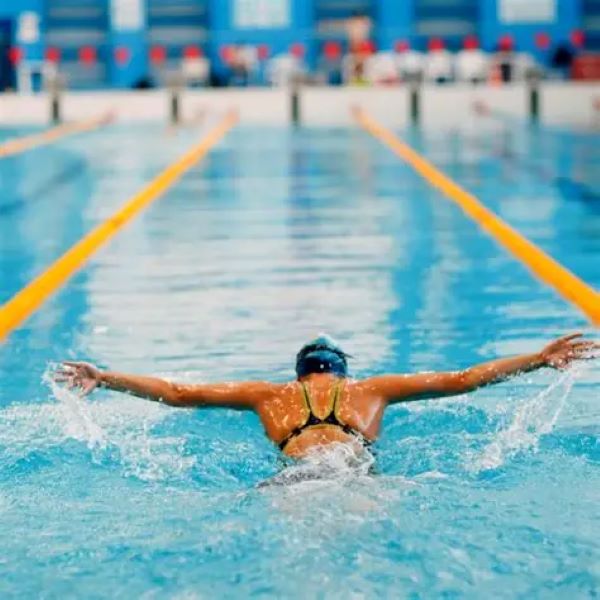 Frequently Asked Questions About Breaststroke
Frequently Asked Questions About Breaststroke
Can I do breaststroke swimming with bad shoulders? Yes. It’s gentler than other strokes. Avoid over-pulling. Keep motions smooth and controlled.
Is breaststroke swimming good for weight loss? Yes. It burns calories and builds muscle. Combine it with regular sessions for best results.
Why does my speed drop after the kick? You may be pausing too long. Reduce glide time. Keep the rhythm steady.
How can I breathe better during breaststroke? Lift only your chin. Breathe quickly and exhale underwater. Stay relaxed.
Do I need special gear? Not usually. Goggles help. A swim cap keeps hair back. Fins aid drills.
Can I swim breaststroke in open water? Yes. Use a modified version. Keep the head low to sight ahead.
How long until I master it? Progress varies. With weekly practice, most improve in 4–8 weeks.
These answers help swimmers train safely and effectively.
Health and Fitness Benefits of Regular Breaststroke
Breaststroke swimming delivers strong physical and mental rewards.
It strengthens major muscles. The pull works chest, shoulders, and back. The kick targets glutes, quads, and calves. Core muscles stay engaged throughout.
Joint impact is low. Water supports the body. This makes breaststroke swimming ideal for arthritis or joint pain.
Cardiovascular health improves. Heart rate rises steadily. Blood circulation increases. Lung capacity expands with rhythmic breathing.
Flexibility gets a boost. The full-range motions stretch hips, ankles, and shoulders. Over time, mobility increases.
Balance and coordination grow sharper. Timing the stroke requires body awareness. This skill transfers to daily movement.
Mental clarity improves. The repetitive rhythm has a meditative effect. Stress levels drop after each session.
Sleep quality often gets better. Physical exertion in water promotes deeper rest. Body temperature regulation helps too.
Weight management becomes easier. Breaststroke burns 400–500 calories per hour. It builds lean muscle, which boosts metabolism.
Posture improves. The horizontal alignment trains the spine. Shoulder positioning corrects slouching over time.
Immune function may strengthen. Cold water exposure in outdoor settings can stimulate immune response.
Overall, breaststroke swimming supports holistic wellness across ages and abilities.
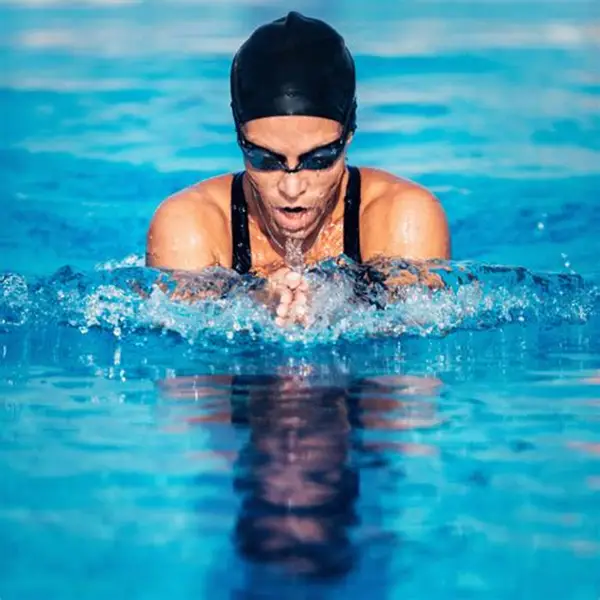 Enjoy the Flow and Power of Breaststroke
Enjoy the Flow and Power of Breaststroke
Breaststroke swimming combines grace, strength, and accessibility in a way few strokes can match. From beginners gaining confidence to athletes refining their race pace, it serves diverse needs with lasting benefits. Its unique rhythm, joint-friendly motion, and full-body engagement make it a smart choice for fitness, therapy, and recreation. By practicing proper technique, avoiding common errors, and using targeted drills, swimmers unlock greater efficiency and enjoyment. Whether in a pool or open water, the principles remain the same. With patience and consistency, anyone can improve. So dive in, trust the glide, and let breaststroke swimming become a rewarding part of your healthy lifestyle.